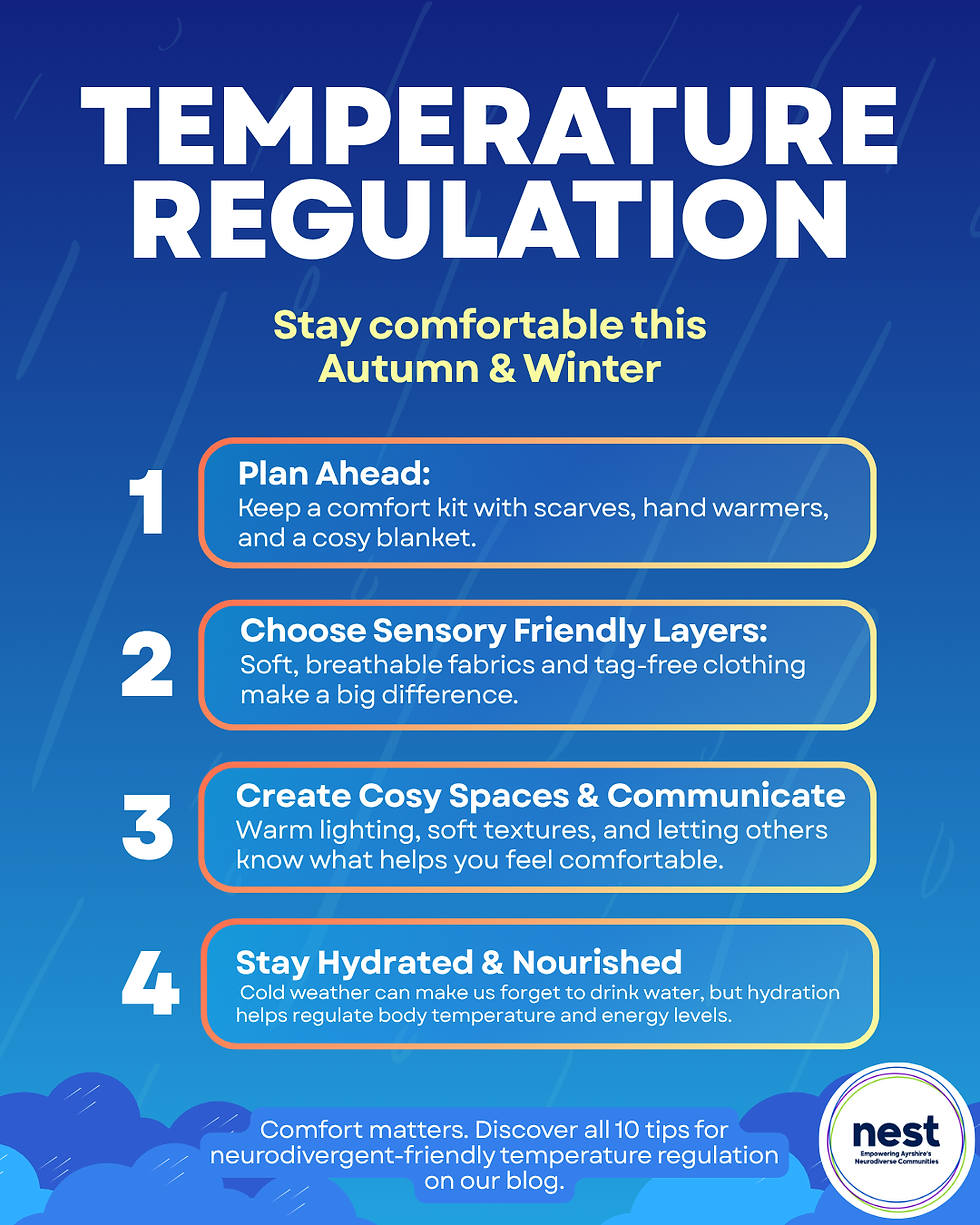🧠🌈 Sensory Processing: More Than Just the 5 Senses
- Celine Dyer

- May 28
- 2 min read
When we think about the senses, most of us list the classic five: sight, sound, smell, taste, and touch. But did you know we actually have at least eight senses that help us make sense of the world around us?
Here’s a quick overview of the eight sensory systems:
👁️ Visual – What we see
👂 Auditory – What we hear
🖐️ Somatosensory – What we feel through touch
👃 Olfactory – What we smell
👅 Gustatory – What we taste
⚖️ Vestibular – Our sense of balance and movement
💪 Proprioceptive – Our awareness of body position and pressure
🚽 Interoceptive – Our internal awareness (like hunger, thirst, or needing the toilet)

For neurodivergent individuals, differences in sensory processing can significantly shape how they interact with the world.
Sounds may feel overwhelming, certain fabrics may be uncomfortable, or they may crave more movement to stay regulated. These sensory differences aren’t behavioural issues—they're part of how someone experiences their environment.
Why Understanding Sensory Processing Matters?
Understanding sensory processing is key to building compassionate and supportive environments. When we understand the "why" behind behaviours, we can respond with empathy and provide strategies that help children (and adults!) feel safe, calm, and able to participate fully.
💡 Ready to Learn More?
📘 Explore our Learn Zone: Visit our Sensory Needs topic page for simple, practical information about sensory systems and regulation strategies.
🎥 Watch our Sensory Workshop: Check out our pre-recorded sensory needs workshop to dive deeper into how sensory processing works and how to support it in daily life.
Creating awareness around sensory processing is a powerful step toward inclusion. Let’s keep learning together. 🌈💙







Comments